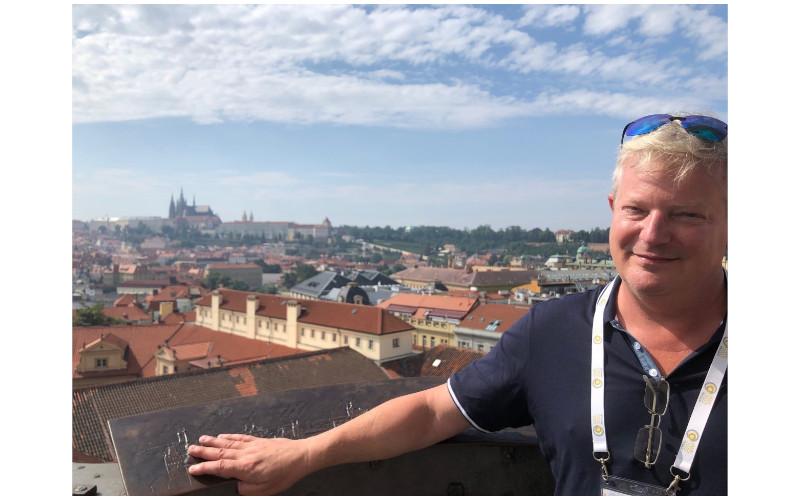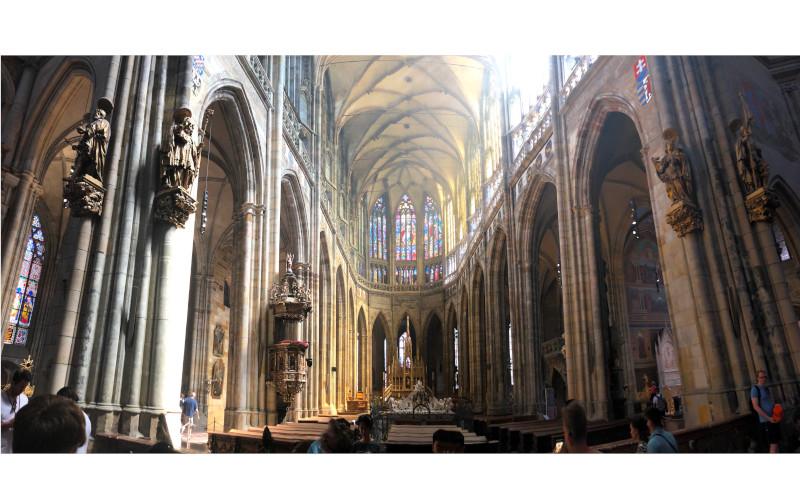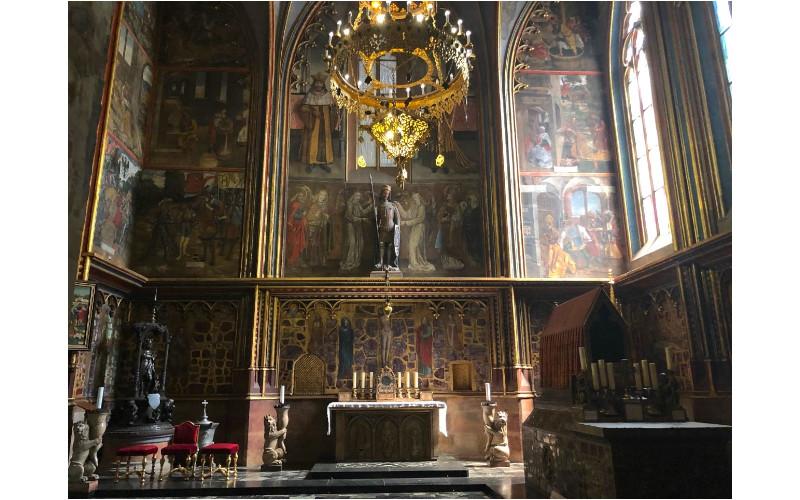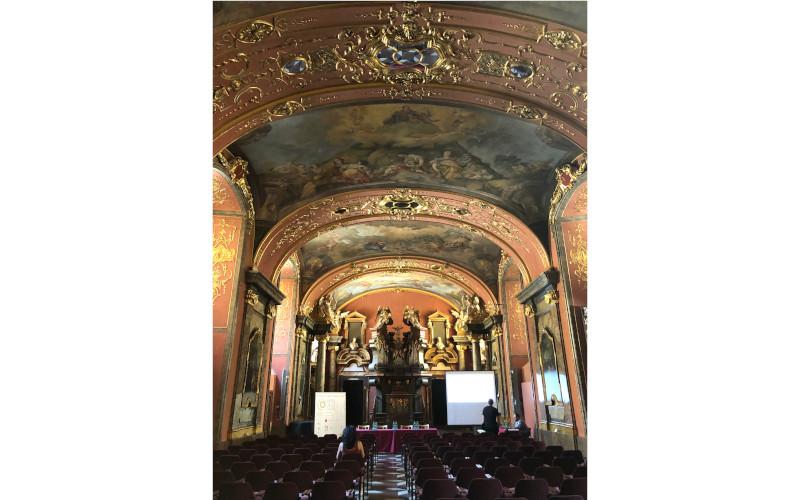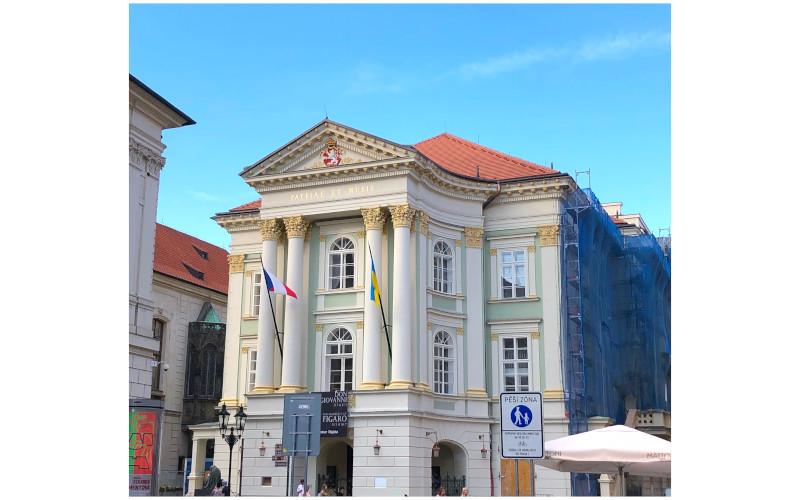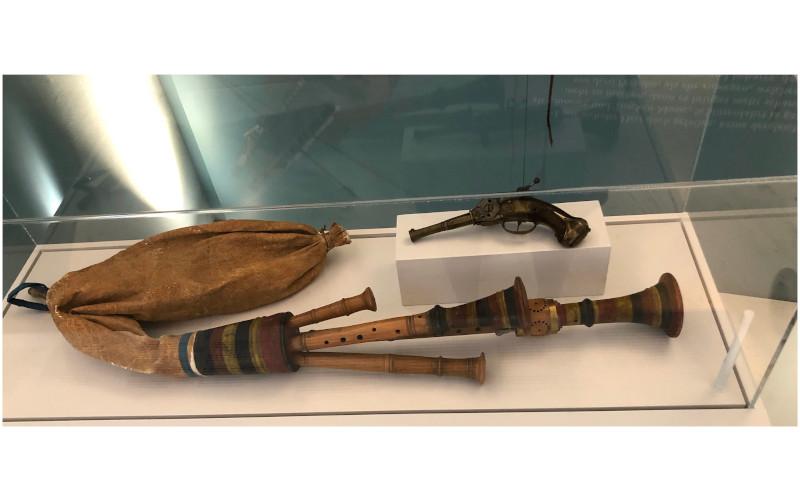The following is by Ray Heigemeir and originally appeard on the Standford Libraries blog. It is reprinted here with kind permission.
I recently had the distinct pleasure of attending the 2022 International Association of Music Libraries, Archives and Documentation Centres (IAML) Conference in beautiful Prague, where I presented a report on our score manuscript digitization project. It was a wonderful, music-filled experience shared with friends old and new. I hope you enjoy this travelogue.
After a long flight and some jet-laggy rest, I met up with my old friend Martinus Severt (Royal Conservatoire The Hague) and we made the most of our pre-conference free time by strolling across the medieval Charles Bridge and hiking up to explore the gothic splendor of Prague Castle and St. Vitus Cathedral. The Cathedral, under construction for a thousand years, houses several chapels including that of St. Wenceslaus, who as Prince Wenceslaus founded the rotunda structure in the 10th century. Wenceslaus is known today as the subject of John Neale’s carol, “Good King Wenceslaus.”
Day 1 of the conference was warm and sunny, and well-caffeinated attendees bustled around our two meeting venues: the Municipal Library and the neighboring National Library, which is housed in the Klementinum, a complex of buildings originally used as a monastery and then a Jesuit college. My 2 pm presentation was in the rather generically-named “Meeting Hall C.” Imagine my shock and absolute delight when the venue turned out to be the baroque Mirror Chapel (built 1724-25). Never have I doled out Powerpoint in such ornate surroundings!
Paper topics ranged from archival practices to music encoding to collaborative research to data modeling (and more) and many focused on the Czech Big Four: Dvořák, Smetana, Janáček, and Martinů. Poster sessions touched on composers, collections, staff training, and preservation projects, among other areas. Thursday’s session was a joint meeting with the Conference of Digital Libraries for Musicology.
Attendees were treated to three evening concerts. First, a performance at the National Museum by Cancionata Praga, a women’s a cappela group singing traditional and popular Czech music (and thank you Chris Durman for navigating the transit system!); the next night we were treated to a chamber concert in the Mirror Chapel by the Epoque Quartet; and on Thursday night we gathered in St. Salvator Church for chamber music by the Capella Regia Musicalis.
Additional musical encounters included a behind-the-scenes look into cylinder preservation at the Czech Museum of Music (thanks to Filip Šir for hosting us!); a stroll by the Estates National Theatre, where Mozart premiered Don Giovanni in 1787 (movie buffs, this is one of the Prague locations where Miloš Forman filmed Amadeus); and some social time with professional harpsichordist and Stanford alum, Mahan Esfahani.
Finally, I visited the Lobkowicz Palace to see their display of musical instruments and score manuscripts. The Lobkowicz noble family were patrons of music and other arts for many generations. Most notably, Joseph Franz Maximilian Lobkowicz was a patron of Beethoven and the dedicatee of the 3rd, 5th, and 6th symphonies. Musical treasures in the collection, numbering in the thousands, were seized by the Nazis and then the Communists, and have now been reclaimed and are being made available to scholars. Some Stanford staff may recall a visit to Special Collections by the current Prince and his wife (aka, Bill and Alex) who were on a learning tour about how rare materials were administered by US institutions. I remembered their kind invitation to "come visit sometime!" and was glad to be able to see how expertly their efforts turned out.
Czech cuisine was…interesting. Mainly a meat-and-dumplings affair, there were also street food offerings such as spit-roasted pork, a rolled sweet pastry called trdelnik, and the treat that caught my eye, langoš: a disc of fried dough topped with garlic sauce, shredded mozzarella, and ketchup. it was delicious. Don't judge.
I followed Prague with a trip to visit family in and around Augsburg, Germany. More music! A visit to the Leopold Mozarthaus was richly rewarded with a creative immersive experience narrating the story of the Mozart family in the context of 18th-century culture and commerce. Leopold was a fun-loving sort of fellow. On display were items such as these bagpipes and a pistol, employed along with whistles and crowd cheers to inject novelty into performances of the Baurnhochzeit (Peasant Wedding). And then the Dom Cathedral! Biergartens! The Alps! Schnitzel! I spent my last day at a music festival supporting Ukraine, held in a former gas supply factory, now an arts campus. German acts included the pop singer Leony (classical music fans, can you name this tune?) and my new favorite performers, Glockenbach (feat. ClockClock), whose hit song “Brooklyn” happened to be my next destination.
- Like Facebook
- Partager sur Facebook
- Identifiez-vous pour poster des commentaires


